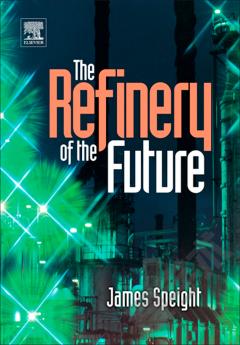The Refinery of the Future
As feedstocks to refineries change, there must be an accompanying change in refinery technology. This means a movement from conventional means of refining heavy feedstocks using (typically) coking technologies to more innovative processes that will coax the last drips of liquid fuels from the feedstock. This book presents the evolution of refinery processes during the last century and as well as the means by which refinery processes will evolve during the next three-to-five decades. Chapters contain material relevant to (1) comparisons of current feedstocks with heavy oil and bio-feedstocks; (2) evolution of refineries since the 1950s, (3) properties and refinability of heavy oil and bio-feedstocks, (4) thermal processes vs. hydroprocesses, and (5) evolution of products to match the environmental market. Process innovations that have influenced refinery processing over the past three decades are presented, as well as the relevant patents that have the potential for incorporation into future refineries. Comparison of current feedstocks with heavy oil and bio-feedstocks. Evolution of refineries over the past three decades. Properties and refinability of heavy oil and bio-feedstocks. Thermal processes vs. Hydroprocesses. Evolution of products to match the environmental market. Investigates the engineering and plant design challenges presented by heavy oil and bio-feedstocksExplores the legislatory and regulatory climate, including increasingly stringent environmental requirementsExamines the trade-offs of thermal processes vs. hydroprocesses
{{comment.content}}








 京公网安备 11010802027623号
京公网安备 11010802027623号